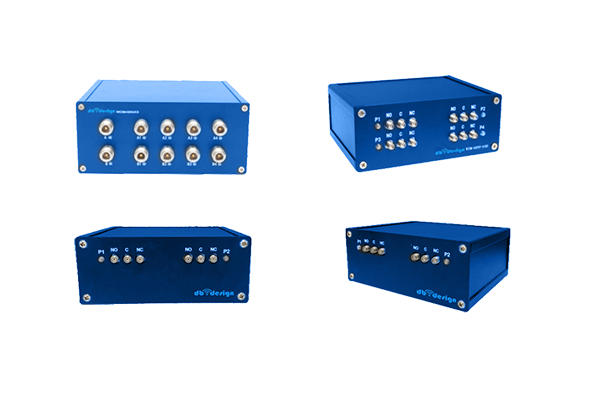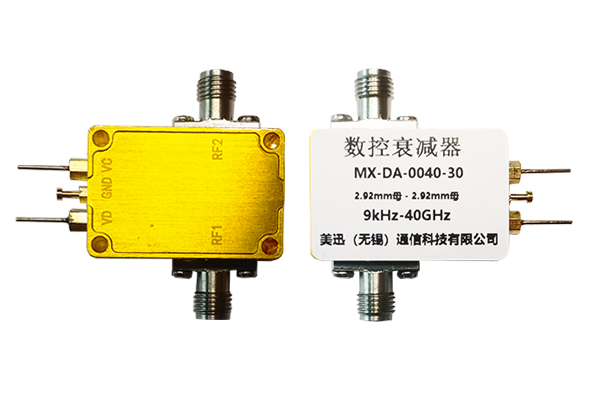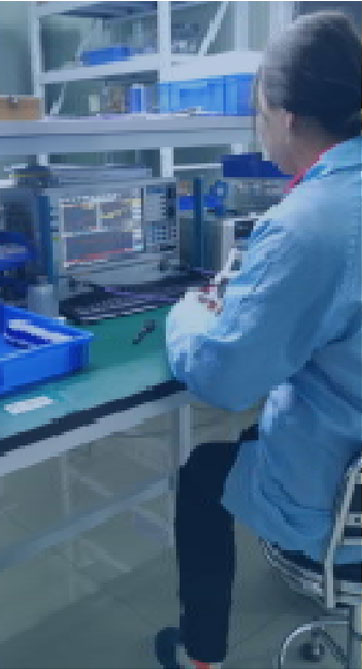
Pin diodes now serve as significant elements in high-bandwidth applications owing to their fundamental material and electrical qualities Their swift switching ability coupled with low parasitic capacitance and modest insertion loss makes them ideal for switch modulator and attenuation applications. The basic mechanism behind pin diode switching depends on regulating the device current via an applied bias voltage. Applying bias shifts the depletion-region extent within the p–n junction and so modifies conductivity. Varying the bias voltage facilitates reliable high-frequency switching of PIN diodes with small distortion penalties
In designs requiring accurate timing control PIN diodes are integrated into refined circuit architectures They can function inside RF filters to permit or attenuate targeted frequency bands. Their strong signal handling properties make them practical for amplifier power divider and signal generation uses. Reduced size and improved efficiency of PIN diodes have enhanced their applicability in wireless and radar engineering
Coaxial Switch Design and Performance Analysis
Coaxial switch development is multifaceted and calls for precise management of several parameters Switch performance is influenced by factors like the switch type operating frequency and insertion loss characteristics. An efficient coaxial switch should reduce insertion loss while optimizing isolation between ports
To analyze performance one must evaluate metrics such as return loss insertion loss and isolation. Such parameters are usually determined via simulations analytic models and physical experiments. Reliable operation of coaxial switches demands thorough and accurate performance analysis
- Coaxial switch analysis typically employs simulation tools, analytical techniques and experimental procedures
- The behavior of a coaxial switch can be heavily influenced by temperature impedance mismatch and manufacturing tolerances
- Emerging developments and novel techniques in switch design concentrate on boosting performance while minimizing footprint and energy use
Optimizing LNA Designs for Performance
Tuning LNA gain efficiency and performance parameters is essential for outstanding signal fidelity in diverse systems It necessitates thoughtful transistor selection bias configuration and circuit topology planning. A robust LNA layout minimizes noise inputs while maximizing amplification with low distortion. Modeling and simulation tools enable assessment of how transistor choices and biasing alter noise performance. Targeting a small Noise Figure quantifies how well the amplifier keeps the signal intact against intrinsic noise
- Prioritizing low-noise transistors is crucial for optimal LNA performance
- Properly set optimal and appropriate biasing reduces transistor noise generation
- The configuration and topology substantially shape the amplifier’s noise response
Techniques of matching networks noise cancellation and feedback control contribute to improved LNA operation
RF Signal Routing with Pin Diode Switches

PIN diode switches serve as practical and efficient solutions for directing RF signals in many systems Fast state changes in these devices permit agile dynamic routing of RF signals. PIN diodes provide the dual benefit of small insertion loss and high isolation to protect signals. PIN diodes are used in antenna switch matrices duplexers and phased array RF systems
Switching depends on bias-induced resistance changes within the diode to route signals. In its open state the diode’s resistance is high enough to stop signal flow. Introducing a positive control voltage reduces resistance and opens the RF path
- Moreover furthermore additionally PIN diode switches provide quick switching low energy use and small form factors
Various architectures configurations and designs of PIN diode switching networks enable complex routing operations. Through interconnection of switches one can construct dynamic matrices for adjustable signal path routing
Assessing the Efficacy of Coaxial Microwave Switches

Evaluation and testing of coaxial microwave switches is vital for verifying correct operation in electronic networks. Many factors such as insertion reflection transmission loss isolation switching speed and spectrum range govern switch performance. Thorough evaluation entails measurement of these parameters under diverse operational environmental and testing circumstances
- Moreover the evaluation must factor in reliability robustness durability and environmental stress tolerance
- In the end the outcome of rigorous evaluation supplies essential valuable and critical information for switch selection design and optimization
Comprehensive Review on Reducing Noise in LNA Circuits
Low noise amplifiers are fundamental in wireless RF systems as they amplify weak signals and reduce noise contributions. The review provides a comprehensive examination analysis and overview of noise reduction techniques for LNAs. We explore investigate and discuss primary noise sources such as thermal shot and flicker noise. We additionally assess noise matching feedback architectures and optimal bias strategies to curtail noise. The review emphasizes recent innovations including novel materials and architecture approaches that decrease noise figures. Providing comprehensive insight into noise management principles and approaches the article benefits researchers and engineers in RF system development
High Speed Switching Applications for PIN Diodes

PIN diodes possess remarkable unique and exceptional traits that fit them well for high speed switching systems Small capacitance together with low resistance enables rapid switching to satisfy precise timing needs. PIN diodes’ adaptive linear voltage response permits precise amplitude modulation and switching. This versatility flexibility and adaptability makes them suitable applicable and appropriate for a wide range of high speed applications Applications span optical communication systems microwave circuits and signal processing hardware and devices
Coaxial Switch Integration and IC Switching Technology
Coaxial switch IC integration provides critical improvements in signal routing processing and handling inside electronic systems circuits and devices. The ICs are designed to direct manage and control coaxial signal flow offering high frequency operation and reduced propagation insertion latency. IC miniaturization supports compact efficient reliable and robust designs appropriate for dense interfacing integration and connectivity contexts
- With careful meticulous and rigorous deployment of these approaches developers can accomplish LNAs with outstanding noise performance enabling trustworthy sensitive electronics By meticulously carefully and rigorously adopting these practices designers can deliver LNAs with excellent noise performance supporting reliable sensitive systems Through low-noise amplifier careful meticulous and rigorous application of such methods engineers can design LNAs with top tier noise performance enabling dependable sensitive systems By meticulously carefully and rigorously applying these methods developers can produce LNAs with superior noise performance enabling sensitive reliable electronics
- Application fields encompass telecommunications data communications and wireless networking
- Aerospace defense and industrial automation represent important application areas
- Consumer electronics audio video equipment and test and measurement systems also use IC coaxial switch technology
LNA Design Challenges for mmWave Frequencies

Millimeter wave LNA design must address elevated signal attenuation and stronger effects of intrinsic noise. Parasitic capacitances and inductances become major factors at mmWave demanding careful layout and parts selection. Minimizing mismatch and maximizing gain remain critical essential and important for mmWave LNA performance. Device selection including HEMTs GaAs MESFETs and InP HBTs plays a decisive role in attaining low noise figures at mmWave. Moreover additionally furthermore the development implementation and tuning of matching networks plays a vital role in ensuring efficient power transfer and impedance match. Paying attention to package parasitics is necessary since they can degrade LNA performance at mmWave. Applying low loss transmission lines and meticulous ground plane design is essential necessary and important to lower signal reflection and keep bandwidth
Modeling and Characterization of PIN Diodes for RF Use
PIN diodes act as fundamental components elements and parts for many RF switching uses. Detailed accurate and precise characterization of these devices is essential to design develop and optimize reliable high performance circuits. This requires analyzing evaluating and examining electrical properties including voltage current resistance impedance and conductance. Their frequency response bandwidth tuning capabilities and switching speed latency or response time are likewise measured
Moreover furthermore additionally building accurate models simulations and representations for PIN diodes is essential crucial and vital to predict their RF system behavior. Various numerous modeling approaches including lumped element distributed element and SPICE models are applicable. Choosing the proper model relies on the specific application requirements and the desired required expected accuracy
Advanced Strategies for Quiet Low Noise Amplifier Design
LNA engineering calls for careful topology and component selection to meet stringent noise performance goals. New and emerging semiconductor advances have led to innovative groundbreaking sophisticated design techniques that lower noise substantially.
Among the techniques are utilizing implementing and employing wideband matching networks integrating low noise high intrinsic gain transistors and refining biasing schemes strategies and approaches. Further advanced packaging approaches together with thermal management methods play a vital role in minimizing external noise contributions. By carefully meticulously and rigorously applying these approaches designers can realize LNAs with outstanding noise performance enabling sensitive reliable electronic systems
